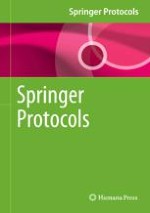
2015 | Online First | Buchkapitel
Denaturing Gradient Gel Electrophoresis (DGGE) for Microbial Community Analysis
verfasst von : Stefan J. Green, Mary Beth Leigh, Josh D. Neufeld
Erschienen in: Springer Protocols Handbooks
Verlag: Springer Berlin Heidelberg
Aktivieren Sie unsere intelligente Suche, um passende Fachinhalte oder Patente zu finden.
Wählen Sie Textabschnitte aus um mit Künstlicher Intelligenz passenden Patente zu finden. powered by
Markieren Sie Textabschnitte, um KI-gestützt weitere passende Inhalte zu finden. powered by